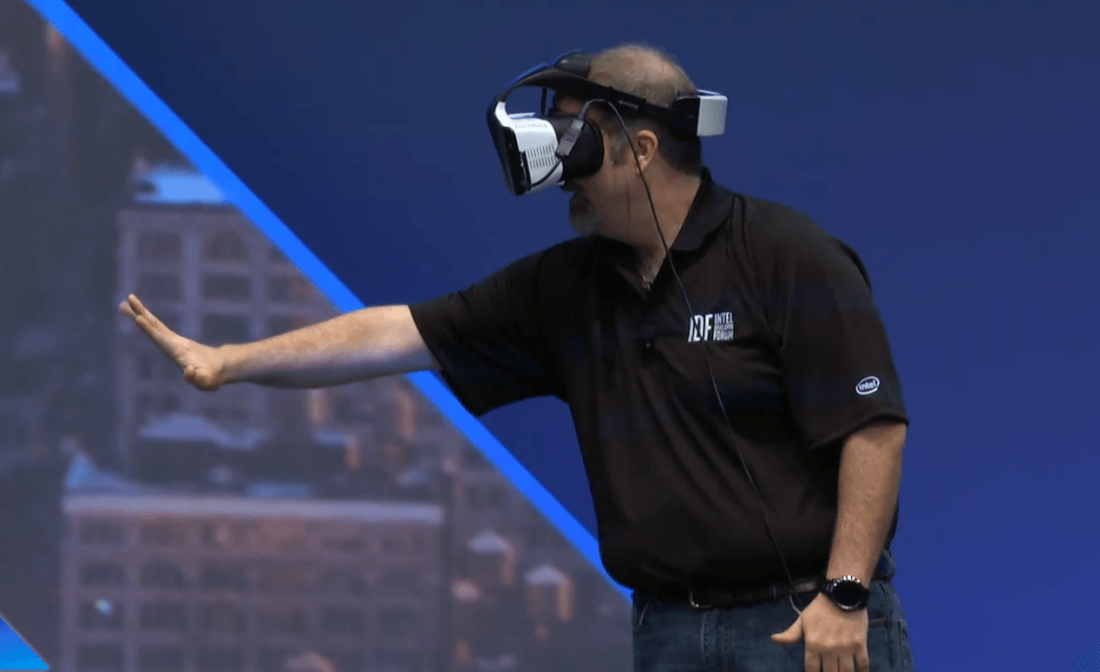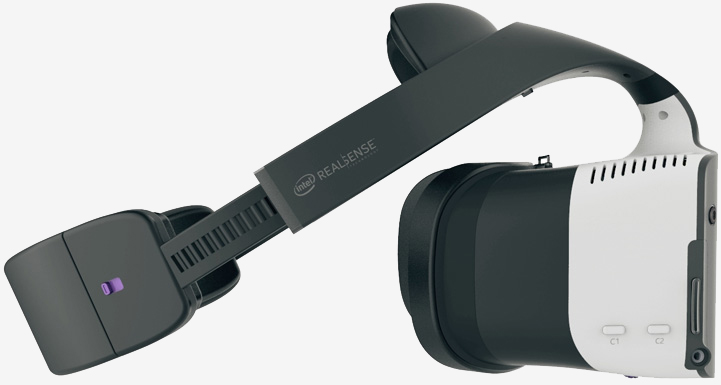Today's top virtual reality headsets are quite capable but they rely on pesky cables that tether you to a PC. Such experiences are said to be incredibly immersive but require said tether due to the immense amount of processing power and data that needs to be pumped to and from the visor.
There's also the issue of control / hand tracking in the virtual world as well as the fact that you're totally oblivious to the real world around you and the people / objects in it.
Given these limitations, it's no surprise that we're seeing some major players shift their attention to augmented reality. Such was the case on Tuesday during the keynote at the Intel Developer Forum (IDF) where Intel CEO Brian Krzanich unveiled a new "mixed reality" headset called Project Alloy (Intel is describing it as VR but it's more AR).

Intel's reference design headset has a lot more in common with Microsoft's HoloLens than it does the Oculus Rift or the HTC Vive. For starters, it's a self-contained unit meaning all of the hardware needed for processing, (RealSense) cameras, sensors and the battery are built into the unit (no tether).
Intel gave a brief demo during the keynote where it revealed its plans for Project Alloy. Unlike the competition, Intel isn't planning to manufacture the wearable itself. Instead, they're aiming to open both the hardware and APIs to allow developers and partners to create their own branded products using the Alloy design.
Unfortunately, that won't happen until the second half of 2017 at the earliest but it's still an important step forward in the AR / VR universe.
